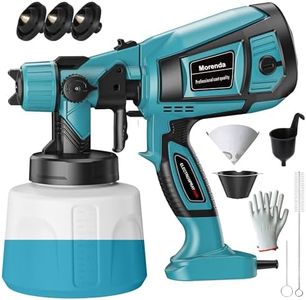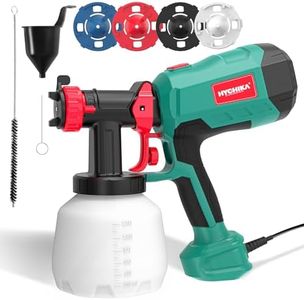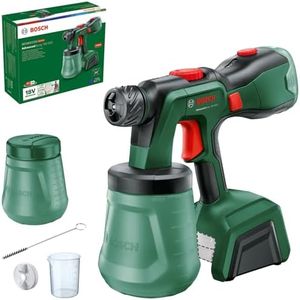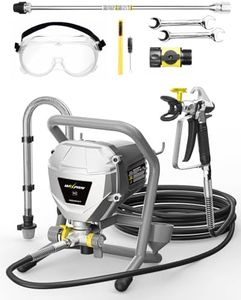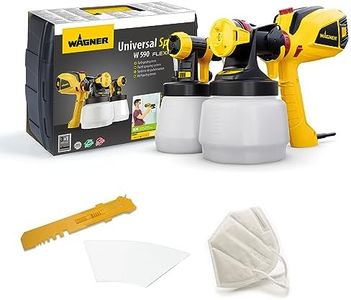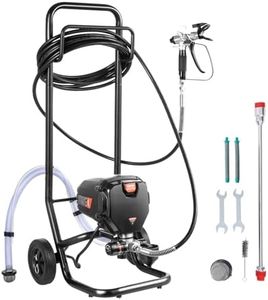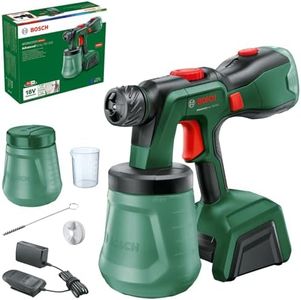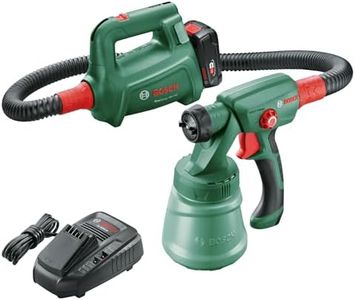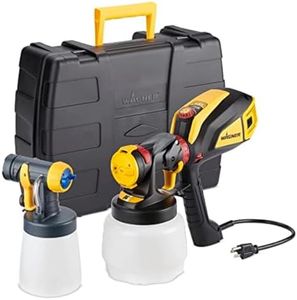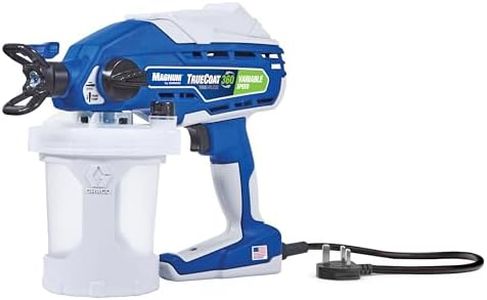We Use CookiesWe use cookies to enhance the security, performance,
functionality and for analytical and promotional activities. By continuing to browse this site you
are agreeing to our privacy policy
10 Best Paint Sprayer For Home Use
From leading brands and best sellers available on the web.By clicking on a link to a third party's website, log data is shared with that third party.
Buying Guide for the Best Paint Sprayer For Home Use
Choosing a paint sprayer for home use can make painting tasks like walls, fences, furniture, or cabinets faster and give you a smoother finish than traditional brushing or rolling. The right model will depend on your project sizes, the materials you plan to spray (like thin stains or thick latex paint), and your comfort with setup and cleanup. Focus on the main specifications, understand how they relate to what you want to do, and pick what matches your needs for both performance and convenience.Type of SprayerPaint sprayers come mainly in three types: airless, HVLP (high volume, low pressure), and compressed air sprayers. The type influences how the sprayer works and what projects it’s good for. Airless sprayers use high pressure to push paint out and are good for large areas like walls and fences. HVLP sprayers use lots of air at low pressure to put out a fine spray, making them better for detailed or smaller projects like furniture or cabinets. Compressed air sprayers use an external air compressor and are less common for home use. Consider what you’ll paint most: for big, quick projects airless is often best; for precision and less overspray, go HVLP.
Power SourcePaint sprayers can be powered by electricity, battery (cordless), or compressed air. Electric models plug into outlets, offering consistent power and are great for longer jobs without worrying about running out of battery. Cordless sprayers are more portable and convenient if you move around a lot or don��’t have easy access to outlets but may need recharging on big jobs. Compressed air models require a separate air compressor, which can be bulky. Choose electric for most home use unless portability is key for you, then consider cordless.
Paint Flow ControlPaint flow control lets you adjust how much paint comes out as you spray. This is important because different projects need different amounts—walls need more flow, while trim and furniture need less for precision. Some sprayers have dial adjustments or knobs; others require changing tips or nozzles. If you plan on using your sprayer for a variety of projects, look for simple, flexible controls so that you can easily adapt to different tasks.
Nozzle/Tip SizesNozzle or tip size determines the size and pattern of the paint spray. Different coatings (like thin stains or thick latex paint) require different size tips for the best spray and coverage. Smaller tips make thinner lines, ideal for detail work and thin paints; larger tips handle thicker materials and broad surfaces. If you’ll use different paints or work on various projects, look for a sprayer that lets you easily switch or choose nozzle sizes to get the most flexibility.
Paint Cup or Hopper CapacityThis is how much paint the sprayer holds before you need to refill. For small jobs like furniture or trim, a smaller cup makes the unit lighter and easier to handle. For larger projects like painting a whole room or fence, a bigger capacity means fewer stops to refill. Match the size to your most common project: bigger is more convenient for large areas but can be heavy when full.
Ease of CleaningPaint spraying can be messy, and cleaning is part of every job. Some sprayers are designed with cleaning in mind, offering detachable parts or attachments to hook up to a garden hose for flushing out paint. If you’ll use your sprayer often or want to switch between different paints, easier cleaning saves a lot of time and frustration. Look for models with good reviews for simple cleanup if this matters to you.
Weight and ErgonomicsThe weight and design of the sprayer affect how comfortable it is to use, especially for longer projects. Lighter sprayers are easier to handle and reduce fatigue, while ergonomic grips make spraying more comfortable. If you expect to use the sprayer for extended periods or need to move it around a lot, pay attention to these factors to make your work easier.

